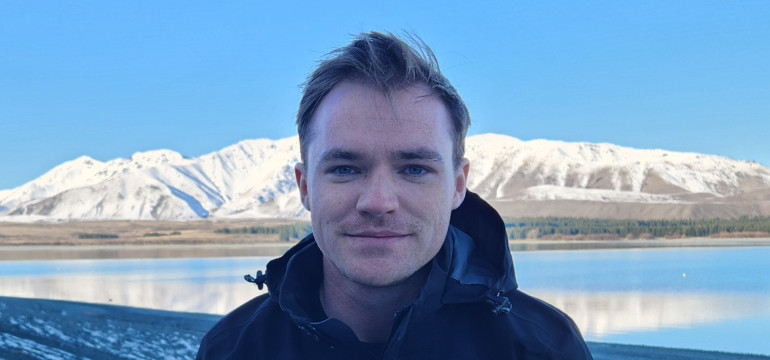Researcher profile: PhD student Caelan Church

How can life-saving guidance documents be made more effective?
Land-use planning that takes into account natural hazard risks can help save lives and properties, by avoiding development that puts communities and important infrastructure in harm’s way.
When the law isn’t clear or comprehensive, guidance documents can play an important role in supporting evidence-based decision making. But these documents are not legally enforced, and it’s hard to know if and how they are used in practise.
Caelan Church is being co-funded by the Natural Hazards Commission (NHC) Toka Tū Ake and QuakeCoRE to research the role of guidance documents in land-use planning decisions. He wants to understand how they are being used, and whether they could be made more useful to practitioners.
Caelan is entering his second year of PhD at the University of Otago’s Centre for Sustainability. He took time out of his studies to answer a few questions for our Researcher Profile series, which highlights the people behind the science we fund.
Q and A
NHC Toka Tū Ake: Why is it important to invest in natural hazards research?
Caelan Church: Over the years events like Canterbury Earthquake Sequence, Kaikoura Earthquake, and Cyclone Gabrielle have all demonstrated that natural hazards can have devastating impacts on Aotearoa’s infrastructure, economy and most importantly – its people. From a land-use planning perspective, to minimise or prevent impacts of future events, we need to make evidence-based decisions. Research can provide valuable insights into the types of natural hazards a community may face, its impacts, and identify people who are most vulnerable. Incorporating this knowledge into plans and policies can enhance communities’ resilience to natural hazards.
NHC: What are your future research or career ambitions?
CC: I love the outdoors and learning about the natural environment, so naturally my research interests and career ambitions revolve around environmental management and planning.
My previous experience in resource and environmental management has shown me that my work can have positive impacts on both people and the environment. I would like to continue on that path in a planning or policy role, where I can use my expertise in planning and hazard management to help communities understand and adapt to natural hazard risk, achieving sustainable outcomes that benefit both them and the environment.
NHC: What is your vision for a resilient New Zealand?
CC: Resilience is about more than ‘bouncing back’ from a hazard event; it is about learning from past mistakes and promoting sustainable, long-term land-use planning. This means avoiding unsustainable development or redevelopment in high-risk areas prone to repeated hazards to keep our communities safe.
Achieving this on a national scale is a big challenge that will require courage and imagination from both our decision-makers and affected communities. But it’s important because it will ultimately lead to a more sustainable, resilient Aotearoa by giving future generations safer communities to live in.